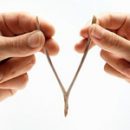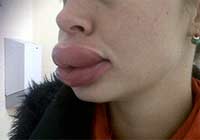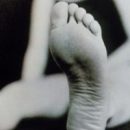A vicious circle: the nose is laid, because it cannot breathe without drops, and without drops you can not do, because the nose does not breathe. Is it possible to get rid of naphthyzine dependence and how to do it?
Content
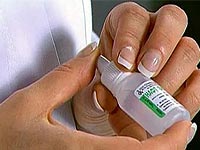 Usually, when it comes to dependencies, it is implied to the abolishing painful thrust, attraction for something or the search for opportunities to master the believed subject and performing certain actions with it. Dependence is physiological, for example, alcoholism, drug addiction or behavioral, like sold-folics and players. And in that, in another case, with time, an increase in dose is required to obtain the expected effect. When it comes to drugs, alcohol, everything is clear. But today doctors often have to deal with addiction that does not fit into certain framework — This dependence on the drops into the nose or how it is often called — Naphtizian addiction.
Usually, when it comes to dependencies, it is implied to the abolishing painful thrust, attraction for something or the search for opportunities to master the believed subject and performing certain actions with it. Dependence is physiological, for example, alcoholism, drug addiction or behavioral, like sold-folics and players. And in that, in another case, with time, an increase in dose is required to obtain the expected effect. When it comes to drugs, alcohol, everything is clear. But today doctors often have to deal with addiction that does not fit into certain framework — This dependence on the drops into the nose or how it is often called — Naphtizian addiction.
The problem of nothing
The problem of naphthycular dependence occurs literally from nothing. One day, a cold, experiencing symptoms of rhinitis, in the hope of getting rid of the nasal congestion, acquires a bottle of drops into the nose in the pharmacy, as a rule, high-speed, for example, napazoline, xylometazoline and other vasoconductive drugs. Two drops in every nasal stroke — And life again acquires the former paints, the drug effect is enough for 6 hours. It takes 3-4 days and the patient has already noticed that the effectiveness of the drug decreased to breathe normally it is necessary to bury the nose more — After 4, then after 2 hours. An attempt to completely abandon the drops causes the most severe nasal congestion, to cope with which you can only with the usual method, the next portion. Flanges with medicine «Set up» In the bedroom, in the bathroom, in the bag, in the desktop — dependence on drops in the nose — on the face.
Naphtizian addiction as a disease
The development of naphthycular dependence is due to quite specific physiological causes. Naphtizin, xylomezoline, oxymetazoline, phenylefedrine and other similar drugs act like adrenaline as adrenaline receptor stimulants. They cause the narrowing of blood vessels of the nasal mucosa, reduce swelling and mucus selection. Prolonged use of the drug reduces the sensitivity of the receptors, and not only to the drug itself, but also to the adrenaline present in the human body. As soon as the droplets ends, the vessels are expanding, and to return to them the former tone can only «New infusion». The vicious circle is closed, drug rhinitis develops, accompanied by atrophy or the growth of the nasal mucosa, which further aggravates the position of the patient.
The nasal mucosa ceases to perform its functions, the air entering the respiratory tract remains dry, contains a large number of microorganisms, the patient ceases to fully feel smells, the development of sinusitis is possible.
How to get rid of naphthycinic dependence
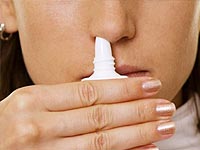 Treatment of naphthycinity dependences begins with refusal of droplets. Easy to say, will say in response «dependent», After all, without a cherished bubble, he no longer represents his life. Nevertheless, it is necessary. Those who are not able to immediately eliminate the use of the drug, recommend gradually reduce its dose. Initially, you can replace drops into the nose for adults children's drug or just dilute the medicine in a ratio of 1: 1 distilled or boiled water. You can dig only one half of the nose, it will double the dose. Gradually, the drug concentration can be reduced to a minimum, which means that it will be possible to get rid of naphthycular dependence.
Treatment of naphthycinity dependences begins with refusal of droplets. Easy to say, will say in response «dependent», After all, without a cherished bubble, he no longer represents his life. Nevertheless, it is necessary. Those who are not able to immediately eliminate the use of the drug, recommend gradually reduce its dose. Initially, you can replace drops into the nose for adults children's drug or just dilute the medicine in a ratio of 1: 1 distilled or boiled water. You can dig only one half of the nose, it will double the dose. Gradually, the drug concentration can be reduced to a minimum, which means that it will be possible to get rid of naphthycular dependence.
To facilitate the state during the period of refusal from the vasoconducting droplets, it is necessary to regularly rinse the nose with sea water or salt solutions available in the pharmacy network (Akwalor, Polydandex). Salt solution (Maerimer) should be bought during nasal congestion, and it can often be used in any quantities. If the breath through the nose is not restored, it is possible to use drugs containing local acting corticosteroids (phlixonase). Hormones reduce swelling and inflammation of the mucous membrane, reduce the secretion of mucus and contribute to restoration «dependent» from naphthycin blood vessels. Treatment of naphthyzine addiction implies the reception of antiallergic preparations (zetrin), relieving the edema of the nose tissue.
To begin treatment of naphthycinic dependence using saline solutions, you can independently, if it is possible to significantly reduce the dose of vesseloring droplets, it means that there is hope to get rid of a detrimental dependence without the help of a doctor. In the event that it is not possible to limit the use of naphthycin, it is recommended to contact the ENT doctor. It is possible that changes in the mucous membrane are irreversible and more active measures of impact will be needed.
Physiotherapeutic procedures: Magnetotherapy, vibrotherapy, infrared therapy, electrophoresis using various medicinal substances helps eradicate. Conservative treatment takes 2-3 months, in the case of its inefficiency, they are resorted to operational techniques.
Surgical treatment of drug rhinitis includes the moxibustion of the mucous membrane, removing the resulting parts of the nose shells, excision of polyps, elimination of the curvature of the nasal partition.

